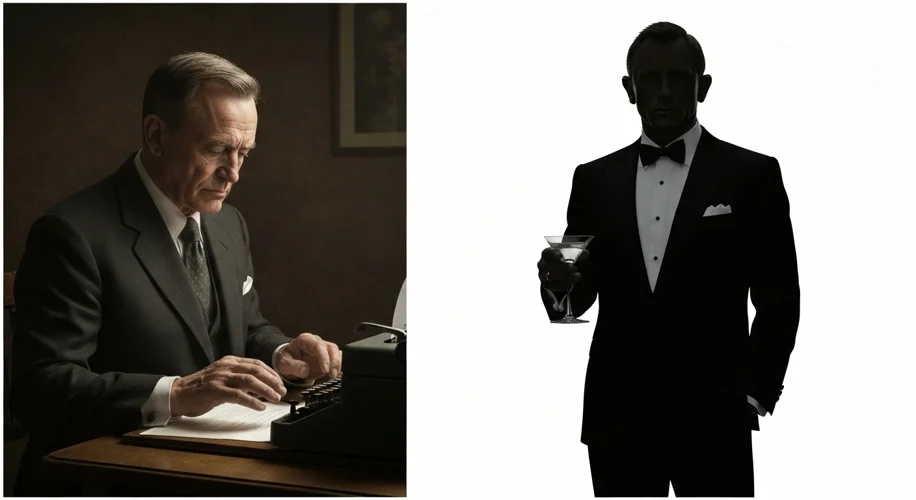In the pantheon of cinematic heroes, few figures loom as large or cast as long a shadow as James Bond, Agent 007. For over six decades, this suave, sophisticated, and undeniably lethal British secret agent has captivated audiences worldwide, evolving with the times yet retaining the core essence that makes him perpetually compelling. The recent buzz around the newest installment, Spectre, only serves to remind us of the franchise’s enduring power and its remarkable journey from a Cold War relic to a modern global phenomenon.
Bond’s genesis lies in the fertile imagination of novelist Ian Fleming, a former naval intelligence officer. Fleming’s creation, first introduced in the 1953 novel Casino Royale, was a deliberate construct – a wish-fulfillment fantasy of a man with the means and the daring to navigate the treacherous currents of espionage in a world teetering on the brink of nuclear annihilation. Fleming imbued Bond with a distinctive taste for the finer things: the perfectly shaken-not-stirred martini, the impeccably tailored Savile Row suit, the high-stakes gambling in glamorous casinos. These elements, far from being mere superficial adornments, were integral to Bond’s mystique. They represented a sophisticated form of escapism, a glimpse into a world of power, privilege, and perilous adventure.

The transition to the silver screen in 1962 with Dr. No marked a pivotal moment. Sean Connery’s portrayal of Bond was definitive. He embodied the character’s lethal charm, his effortless cool under pressure, and his capacity for both brutal efficiency and devastating wit. Connery set the template: the debonair spy, armed with cutting-edge gadgets (courtesy of Q Branch), facing off against megalomaniacal villains with outlandish schemes. The early films, such as Goldfinger (1964) and Thunderball (1965), became cultural touchstones, influencing fashion, technology, and even the way audiences perceived international intrigue.
The franchise, however, has never been static. It has demonstrated an uncanny ability to adapt and reinvent itself. As the political landscape shifted with the fall of the Soviet Union, Bond’s adversaries evolved from Cold War masterminds to global terrorists, media moguls, and eco-terrorists. The character himself has seen numerous iterations, with actors like George Lazenby, Roger Moore, Timothy Dalton, Pierce Brosnan, and Daniel Craig each bringing their unique interpretation to the role. While some eras leaned into the more flamboyant, gadget-heavy spectacle, others, like Timothy Dalton’s, explored a darker, more grounded portrayal of the agent’s inner turmoil.
Daniel Craig’s tenure, beginning with Casino Royale (2006), represented a significant reinvention. This Bond was raw, physically imposing, and emotionally scarred. The focus shifted towards a more realistic, gritty depiction of espionage, with fewer fantastical gadgets and more emphasis on Bond’s vulnerability and the brutal consequences of his actions. This modern interpretation resonated with a new generation of viewers, proving that the core appeal of Bond – his courage, his resilience, and his unwavering commitment to duty, even in the face of personal loss – remained potent.
What accounts for this remarkable longevity? Several factors converge. Firstly, the character of Bond himself is a fascinating paradox: a man who operates outside the rules yet serves Queen and Country; a womanizer who often appears emotionally detached, yet capable of profound connection; a killer with a code of honor. This inherent complexity allows for continuous exploration and reinterpretation.
Secondly, the franchise has mastered the art of spectacle. From breathtaking car chases and daring stunts to exotic locations and iconic theme songs, Bond films are designed to be immersive experiences. They offer a potent blend of escapism and thrilling action, tapping into universal desires for adventure and heroism.

Furthermore, Bond’s evolution mirrors broader cultural shifts. The films have, consciously or unconsciously, reflected changing attitudes towards gender roles, technology, and global politics. While critiques regarding its portrayal of women and occasional indulgences in jingoism are valid and important conversations, the series has, over time, attempted to address these issues, albeit with varying degrees of success.
Comparing Bond to other long-running franchises, like Star Wars or Star Trek, reveals a shared DNA of creating compelling universes with characters that resonate across generations. However, Bond’s distinctiveness lies in its grounding, however fantastical, in the realm of espionage and its constant calibration to the zeitgeist. While Jedis wield lightsabers and Starfleet explores the galaxy, Bond navigates a world that, while heightened for dramatic effect, remains recognizably our own.
The continuing success of the James Bond franchise is not merely a testament to its past glories but a demonstration of its capacity for reinvention and its deep understanding of what audiences crave. It’s the perfect martini of action, intrigue, and enduring charisma – a cinematic journey that continues to thrill, surprise, and, most importantly, entertain. As the world continues to change, so too will Bond, forever adapting, forever relevant, forever 007.


